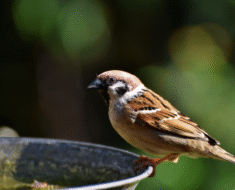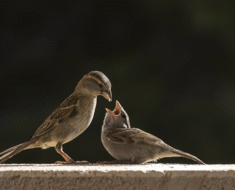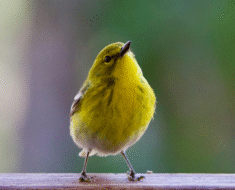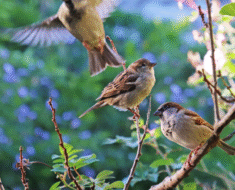
If you’ve ever caught that flash of red darting across your backyard on a quiet morning, you’ve experienced a little bit of magic. Cardinals — those bright, melodic songbirds beloved across North America — have a way of stealing attention and softening moments. But beyond their color and song lies something just as interesting: what, exactly, do they eat, and how do they manage to thrive through every season?
Let’s take a closer look at their feeding habits and find out what keeps these birds content — especially for those observing cardinals in Virginia through the changing months.
A Closer Look at the Cardinal
The Northern Cardinal is a familiar face in many backyards. Males are striking in full red, while females showcase warm tan or olive tones with delicate red highlights. Both have that unmistakable black face mask and cone-shaped orange bill. Cardinals aren’t migrators; instead, they tough it out through winter, which says a lot about their clever approach to feeding. This resilience is one of the reasons these birds have become beloved across suburban and rural America alike.
What Cardinals Eat: Nature’s Menu
Cardinals enjoy a surprisingly rich and varied menu — think of them as the food critics of the bird world. Their diets change subtly by season, but they tend to be loyal to their favorites:
-
Seeds: Black oil sunflower and safflower seeds top their list. Rich in oils and nutrients, these small seeds keep them energized, especially in cold weather.
-
Fruits: Cardinals love wild berries — dogwood, mulberry, wild grape. During winter, these fruits act as vital sugar sources when insects disappear.
-
Insects: In warmer months, they eagerly snap up beetles, caterpillars, and grasshoppers. Parents often gather insects to feed their young for optimal protein.
-
Grains: When living near farmland, they don’t mind raiding the stray bits of corn or wheat.
Watching them work is fascinating — they rarely gulp seed after seed. Instead, they crack each one skillfully with their thick beaks, tossing the husk aside to savor the kernel. That small act captures their deliberate, almost mindful feeding style.
Feeding Behavior: Calm but Territorial
Unlike blue jays or starlings that scatter everything in sight, cardinals claim their space quietly. The males often approach feeders first, keeping watch while females follow. They prefer platform or hopper feeders and usually dine closer to cover — near shrubs, thickets, or the edges of woods.
Sometimes, you might find a pair feeding together, gently chirping as if discussing breakfast. They don’t rush or fight; they simply take turns, trusting each other’s rhythm.
The Seasonal Rhythm of Eating
What’s remarkable about cardinals is how their menu evolves with the seasons — a subtle example of their adaptability.
-
Spring: Bugs rule. With nesting underway, protein from insects fuels baby chicks and restores parents’ energy.
-
Summer: The diet becomes a mix of fruits, grains, and insects — a balanced buffet. They’ll also pop into bird feeders regularly.
-
Autumn: Calories take priority. Seeds and berries dominate as they prepare for shorter, colder days.
-
Winter: Survival mode kicks in. When snow covers everything, cardinals rely on berries left on shrubs and backyard feeders filled with black oil sunflower seeds.
Keeping feeders stocked throughout the cold months not only supports birds but turns your yard into a living winter tableau.
How to Attract Cardinals
Creating a cardinal-friendly space isn’t complicated; it’s all about comfort and consistency.
-
Right seeds: Stick with black oil sunflower and safflower. Avoid cheap mixes.
-
Right setup: Platform or hopper feeders allow enough space for their size.
-
Right environment: Include dense shrubs like holly or dogwood for shelter and nesting.
-
Water matters: A clean birdbath — even heated in winter — can attract them when other water sources freeze.
-
Right vibe: Cardinals love quiet yards. Less noise, more nature.
Why Cardinals Matter to the Environment
Beyond their beauty, cardinals play surprisingly vital roles in local ecosystems. They disperse seeds as they feed on fruits, helping new plants flourish. Their appetite for insects controls pests naturally — an ecological bonus for gardeners.
Observing cardinals in Virginia highlights how seamlessly they fit into the landscape. From farmland edges to suburban gardens, they thrive almost anywhere food and shelter overlap.
Experimenting with Food
If you like experimenting, try offering tiny fruit bits or crushed peanuts (unsalted). Cardinals will often test new foods cautiously, hopping close, tilting their heads as if contemplating your offering. Some grow fond of grapes or apple slices; others ignore them completely. They’re full of personality — that unpredictability is part of what makes watching them so enjoyable.
Avoid human foods like bread or crackers; they lack nutrients and can upset these birds’ digestion. Keep offerings fresh and natural.
Myths and Misunderstandings
A few myths follow cardinals around. One popular belief says they eat only seeds — not true. Their insect diet, especially during nesting, proves otherwise. Another misconception claims they migrate each winter. In fact, cardinals stay put as long as there’s food and shelter. Their bright plumage against snow is possible only because of this year-round resilience.
Cardinals’ adaptability makes them one of the few species comfortable in both deep woods and busy backyards — even urban parks.
Supporting Other Birds Too
Cardinals might be the headliners, but sharing your space with other species adds depth to your birdwatching experience. To expand your efforts, explore the Sparrow Conservation Guide: How to Help Local Populations Thrive. It’s a useful read if you’re interested in supporting biodiversity beyond just one bird species.
Closing Thoughts
Cardinals teach us something simple: consistency creates harmony. By adapting their diet to what’s available, they thrive through floods, frosts, and human neighborhood changes alike. Watching them is more than just a nature hobby — it’s a reminder that resilience often comes quietly.
If you’re lucky enough to observe cardinals in Virginia, pause for a few minutes each day. Notice how they feed, how they share space, and how effortlessly they move between seasons. Keep their feeders clean, their water fresh, and the shrubs dense. These small gestures encourage one of nature’s most radiant creatures to keep returning — turning every morning visit into something peaceful and alive.





